You are here
Peak history Pobeda in Kyrgyzstan.
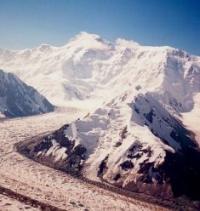

Cultural walking tours Kyrgyzstan.
“There is no such sense of solitude as that which we experience upon the silent and vast elevations of great mountains. Lifted high above the level of human sounds and habitations, among the wild expanses and colossal features of Nature, we are thrilled in our loneliness with a strange fear and elation – an ascent above the reach of life's expectations or companionship, and the tremblings of a wild and undefined misgivings”
Joseph Sheridan Le Fanu. «The Haunted Baronet And Others: Ghost Stories 1861-70»
Side tour in Kyrgyzstan.
Pobeda Peak 7439 meters above sea level, the highest point of the Tien Shan mountain system, the peak is located on the border between the Republic of China and the Kyrgyz Republic, located in the eastern part of the Kakshaal-Too ridge in the Ak-Suu district of the Issyk-Kul region.
Pobeda Peak (Kyrgyz Zhenish Chokusu) is a mountain peak in the mountains of the Central Tien Shan, the highest point in Kyrgyzstan. Pobeda Peak is located on the Kyrgyz-Chinese border, east of Lake Issyk-Kul, 19.8 kilometers southwest of Khan Tengri Peak.
The first attempt to climb, undertaken in 1938, ended with an ascent to a height of 6930 meters above sea level. On September 19, 1938, three of the group of Professor A. A. Letavet climbed the mysterious peak and named it the peak of the 20th anniversary of the Komsomol.
Experts compared photographs taken in 1938 by Gutman and in 1958 by V. Abalakov and found that they were taken from the same place. Thus, it was possible to prove that the climbers from the Gutman expedition were the first to conquer Pobeda Peak. Thus, Pobeda Peak was discovered - the highest peak of the Tien-Shan.
Only in 1943 it was found out that Pobeda Peak is half a kilometer higher than Khan-Tengri Peak, and soon the peak was named in honor of the victory in the Great Patriotic War. In 1956, a group led by Vitaly Abalakov made this ascent as a seven-thousander and for a long time were considered the first climbers to the summit.
Thanks to the efforts of Gutmann's nephew, analytical research was carried out and the priority of the first ascent of the Gutmann group was proved. The history of conquering the Pobeda Peak is full of tragic events, and there was even such a period in the late sixties when the number of those who ascended to the top was equal to the number of those who died.
Such dramatic events were caused by a very harsh climate and significant avalanche danger on all routes. Pobeda Peak is included in the five seven-thousanders of the CIS. Climbers who have climbed this peak receive the honorary title of "Snow Leopard".
The first European to see this peak was the famous Swedish traveler Sven Hedin in 1895. He was able to almost accurately name its height - 7320 meters above sea level. Soon he was given the name in honor of the victory in the Great Patriotic War.
Pobeda Peak is the second highest in the CIS after Communism Peak (Ismail Samani Peak in Tajikistan, 7495 meters above sea level). Alpinists from Almaty were the first to decide to conquer this peak in 1949, but they had to retreat after several avalanches descended from the northern slope.
Detailed reconnaissance of the Pobeda Peak massif was carried out in 1952 - 1953. expedition of TurkVO climbers. In 1955, two expeditions decided to storm the summit at once: the expedition of TurkVO climbers from Kazakhstan and the expedition of the Committee of Physical Culture and Sports from Uzbekistan.
The struggle for the leadership of the two teams led to tragedy. Expedition of climbers from Kazakhstan, having risen to a height of 6930 m, fell into a snow hurricane. Of the 12 climbers, only one Ural Usenov remained alive. Serious conclusions were drawn from this tragedy.
As a result, the joint team of the Committee of Physical Culture and Sports of Kazakhstan with Moscow Spartak on August 30, 1956 conquered the Pobeda Peak. An interesting story by P. N. Rapasov about the expedition of military topographers and climbers who surveyed Mustaga.
Their work proceeded in difficult conditions. Despite the fact that the campaign began only in July, the mountain passes were covered with snow. People had to make their own paths in deep snow, and then lead horses along them.
It is difficult to breathe at high altitude, so they had to stop every 100 steps. It rained and snowed throughout the summer. The tops of the mountains were shrouded in mist. Rivers, and there are many of them and their current is fast - they overflowed strongly.
During crossings, horses and people were knocked down. During research and topographic surveys, it was often necessary to make large ascents to glaciers and icy rocks. Climbers and topographers were assisted by pilots who took aerial photographs from aircraft.
It was difficult for them to fly at high altitude, among high peaks. Thanks to courage, resourcefulness and discipline, the task was completed, the highest peak of the Tien Shan, Pobeda Peak, was discovered. The Geographical Society of the USSR awarded the participants of this expedition with a high award - the Gold Medal named after P.P. Semenov-Tyan-Shansky.
The first ascent to the main peak of Pobeda, which was made in 1956, was not easy. For a whole year, climbers carefully prepared for it. “On the thirtieth of August,” they say, “the wind whistles on the slopes of Pobeda Peak, raising clouds of snow dust.
But a chain of people, tied two by two with a rope, crawls and crawls up a steep slope. The icy wind penetrates under the windbreaker, makes you hide your nose deeper into the balaclava. Each carving movement causes shortness of breath.
Shackletons on the legs seem to be poods. The slope is getting steeper. Suddenly the snow wall disappears - and before us is a spacious, huge sky in running clouds, and all around, as far as the eye can see, mountains and mountains.
We are at the top! We have reached the highest point of the Tien Shan! A red flag flutters in the wind, and in a tin box hidden among the stones lies a note: “August 30, 1956 at 4 pm. 30 minutes. a group of a joint expedition led by V. M. Abalakov made the first ascent to the highest peak of the Tien-Shan, the last unconquered seven-thousander of the USSR - Pobeda Peak!
In 1959, Uzbek climbers made an attempt to storm Pobeda “on the fly”, without proper acclimatization. The group was caught in a blizzard. Symptoms of altitude sickness appeared. Not being able to quickly descend, besides having received frostbite, three participants died.
The rest were saved, risking their lives, by members of the Kazakh expedition. In 1960, an attempt was made to climb with the evacuation of the bodies of the dead. Climbers climbed in several bundles. The expedition was covered by an avalanche, several bundles rolled up, some of them managed to get out on their own and dug up the rest, but 10 people could not be brought back to life.
1961: The Georgian expedition led by Otar Gigineishvili was on the assault. Already on the return from the summit, the group got into a snowstorm, three people died, two of them as a result of a breakdown.
Geographical coordinates of main summit of Pobeda Peak: N42°02'08.29" E80°07'47.38"
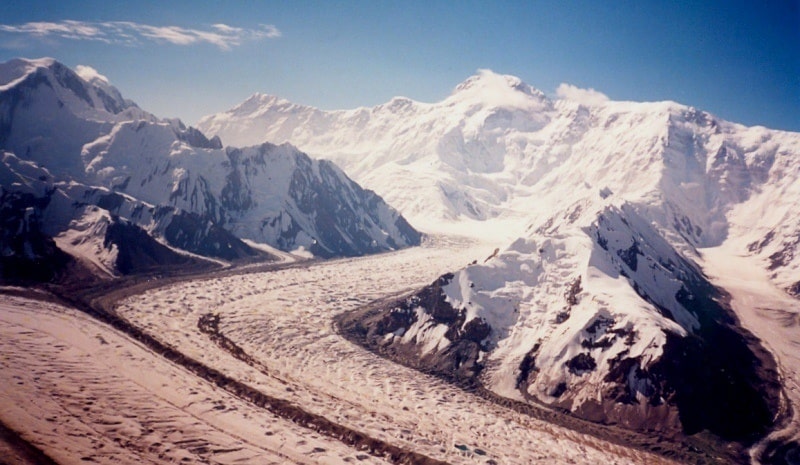
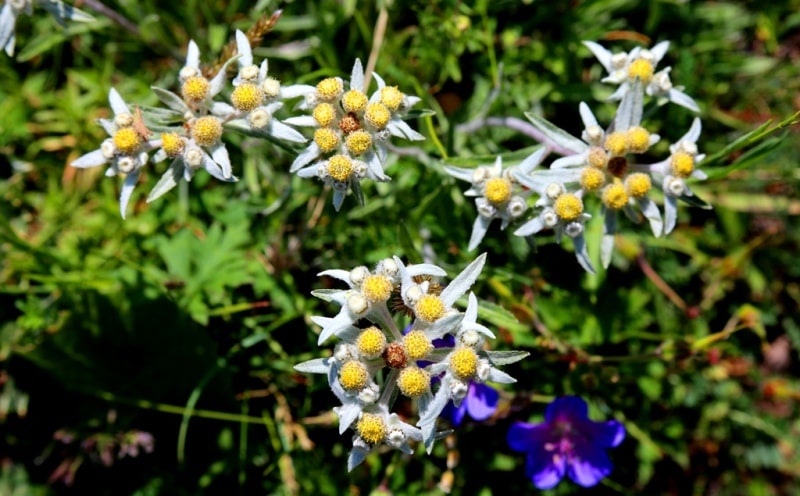
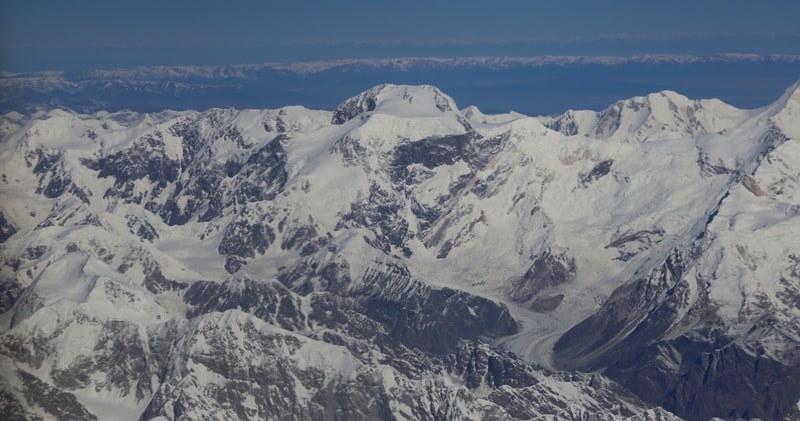
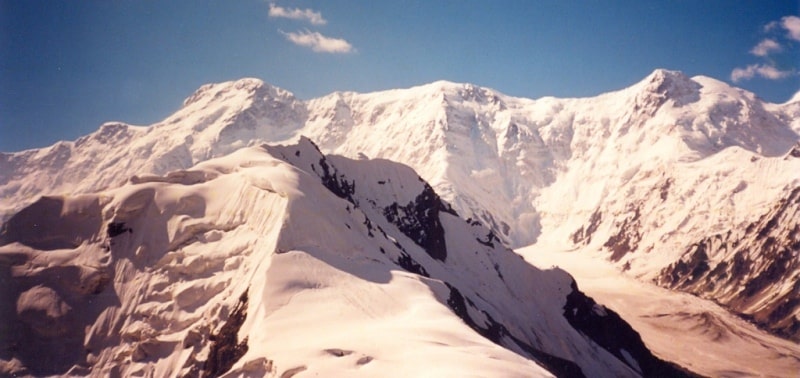
Authority:
Pobeda Peak and other most dangerous mountain peaks of the USSR. Naryn "encyclopedia, Frunze, 1991. "Kyrgyzstan", publishing house "Thought", Moscow, 1977.
Photos by
Alexander Petrov.







